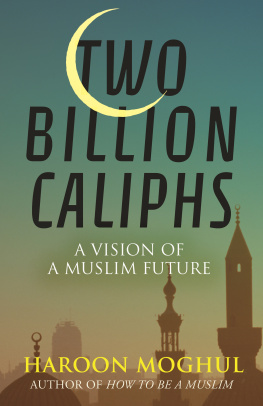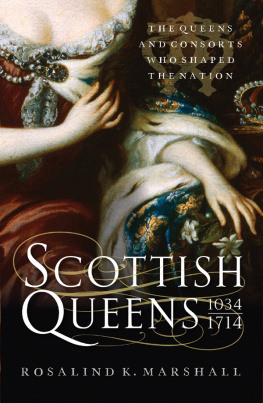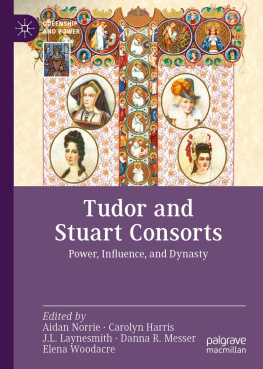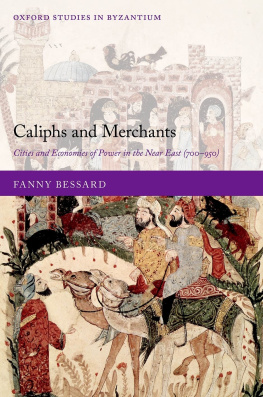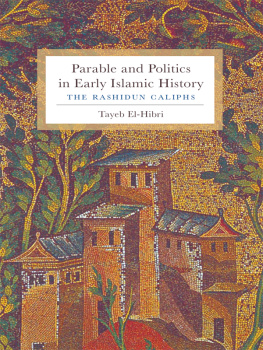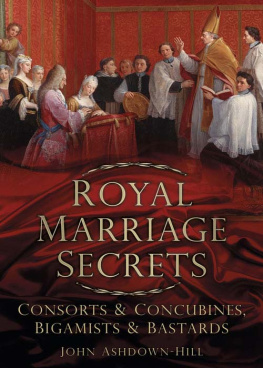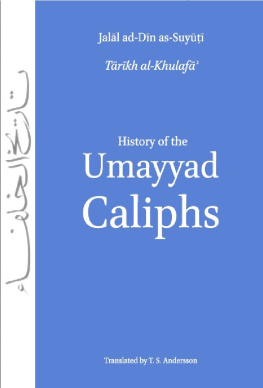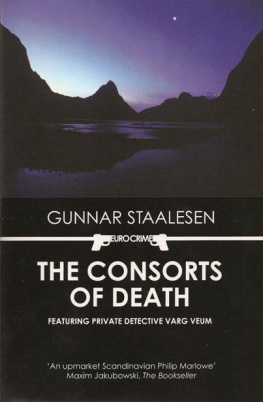Ibn al-Sai Ibn - Consorts of the Caliphs
Here you can read online Ibn al-Sai Ibn - Consorts of the Caliphs full text of the book (entire story) in english for free. Download pdf and epub, get meaning, cover and reviews about this ebook. City: New York, year: 2013, publisher: New York University Press, genre: Religion. Description of the work, (preface) as well as reviews are available. Best literature library LitArk.com created for fans of good reading and offers a wide selection of genres:
Romance novel
Science fiction
Adventure
Detective
Science
History
Home and family
Prose
Art
Politics
Computer
Non-fiction
Religion
Business
Children
Humor
Choose a favorite category and find really read worthwhile books. Enjoy immersion in the world of imagination, feel the emotions of the characters or learn something new for yourself, make an fascinating discovery.

- Book:Consorts of the Caliphs
- Author:
- Publisher:New York University Press
- Genre:
- Year:2013
- City:New York
- Rating:4 / 5
- Favourites:Add to favourites
- Your mark:
- 80
- 1
- 2
- 3
- 4
- 5
Consorts of the Caliphs: summary, description and annotation
We offer to read an annotation, description, summary or preface (depends on what the author of the book "Consorts of the Caliphs" wrote himself). If you haven't found the necessary information about the book — write in the comments, we will try to find it.
Consorts of the Caliphs — read online for free the complete book (whole text) full work
Below is the text of the book, divided by pages. System saving the place of the last page read, allows you to conveniently read the book "Consorts of the Caliphs" online for free, without having to search again every time where you left off. Put a bookmark, and you can go to the page where you finished reading at any time.
Font size:
Interval:
Bookmark:


NEW YORK UNIVERSITY PRESS
New York and London
Library of Arabic Literature
Editorial Board
General Editor
Philip F. Kennedy, New York University
Executive Editors
James E. Montgomery, University of Cambridge
Shawkat M. Toorawa, Cornell University
Editors
Julia Bray, University of Oxford
Michael Cooperson, University of California, Los Angeles
Joseph E. Lowry, University of Pennsylvania
Tahera Qutbuddin, University of Chicago
Devin J. Stewart, Emory University
Managing Editor
Chip Rossetti
Digital Production Manager
Stuart Brown
Assistant Editor
Gemma Juan-Sim
The Library of Arabic Literature is a new series offering Arabic editions and English translations of key works of classical and pre-modern Arabic literature, as well as anthologies and thematic readers. Books in the series are edited and translated by distinguished scholars of Arabic and Islamic studies, and are published in parallel-text format with Arabic and English on facing pages. The Library of Arabic Literature includes texts from the pre-Islamic era to the cusp of the modern period, and encompasses a wide range of genres, including poetry, poetics, fiction, religion, philosophy, law, science, history, and historiography.
Supported by a grant from the New York University Abu Dhabi Institute, and established in partnership with NYU Press, the Library of Arabic Literature produces authoritative Arabic editions and modern, lucid English translations, with the goal of introducing the Arabic literary heritage to scholars and students, as well as to a general audience of readers.
Philip F. Kennedy
General Editor, Library of Arabic Literature
For Marianne
| ad | anno Domini = Gregorian (Christian) year |
| ah | anno Hegirae = Hijrah (Muslim) year |
| art. | article |
| Ar. | Arabic |
| c. | century |
| ca. | circa = about, approximately |
| cf. | confer = compare |
| d. | died |
| ed. | editor, edition, edited by |
| EI2 | Encyclopaedia of Islam, Second edition |
| EI3 | Encyclopaedia of Islam, Three [Third edition] |
| EIran | Encyclopaedia Iranica |
| esp. | especially |
| f., ff. | folio, folios |
| fl. | flourished |
| lit. | literally |
| MS | manuscript |
| n. | note |
| n.d. | no date |
| n.p. | no place |
| no. | number |
| p., pp. | page, pages |
| pl. | plural |
| Q | Quran |
| r. | ruled |
| vol., vols. | volume, volumes |
Muted was the epithet used to describe female subjects by the anthropologists Edwin and Shirley Ardener in an influential critique of their discipline and its methods, published in 1975; they identified a systemic problem, that fieldworkers consistently sought out the mens story, set down what they heard, and attended above all to male activities; in most cases, the researchers had little access to women, but they also did not try to listen to them or elicit their stories. Consequently, women disappeared from the record, their voices were not registered, and the whole picture suffered from distortion.
The Ardeners provided a polemical but persuasive angle of view on a widespread discomfort with cultural assumptions, and their work spurred a new generation of readers and researchers to begin listening in to muted groups of individuals from the past, those muffled female participants whose labour created our world (to borrow Angela Carters phrase about storytellers, ballad-singers, and other cultural keepers of memory). The impulse was part of the broadly feminist program of those years, but it grew larger than that political movement, as scholars in history, literature, social studies, and indeed almost every area of inquiry pursued the new archaeology, unearthing remarkable new material about womens lives and deeds, and often bringing forgotten figures back to consciousness. The findings did not only fill in gaps in the view, but also transformed the whole horizon and realigned contemporary understanding in crucial ways. Historians such as Natalie Zemon Davis and Emmanuel Le Roy Ladurie excavated provincial archives and tuned in to the voices of female witnesses and defendants; literary scholars returned to and in some cases revived familiar and not unsuccessful writers (Christine de Pisan, Christina Rossetti, Emily Dickinson) to illuminate the social and psychological radiation of their works as women. Some of the ignoranceand the bigotry that arises from ignorancebegan to lift, with many powerful reverberations for the position of women today. It is sobering to remember that less than a hundred years ago, Oxford and Cambridge did not award degrees to women (until 1920 and 1947 respectively), though they had begun to allow women to sit (successfully) for the exams. Now women have reached numerical parity at undergraduate and graduate levels in many subjects, and have entered every discipline as teachers and professorsMaryam Mirzakhani has won the Fields Medal in Mathematics and Julia Bray holds the Laudian Chair of Arabic at Oxford. (I do realize that Julia Bray, as project editor of this volume, may dislike being singled out for praise, but her appointment seems to me a great cause for pride and pleasure, and so I hope she will not mind my drawing attention to it.)
If low expectations, combined with misunderstanding and social prejudice, have muted women in the Western tradition, the silence that has wrapped women in the East is even deeper. In the United States and Europe, the voices of women from the Islamic past are often eroticized and trivializedthrough harem romances and desert epics, advertising and propaganda. Rimsky-Korsakovs luscious music for Shhrazade was adapted for Fokines ballet of 1910 and accompanies a plot in which orientalist assumptions of savagery, lasciviousness, slavery, and tyranny are taken to torrid extremes. Ways of selecting and presenting stories from the Arabian Nights have exacerbated the problem: heroines who are adventurous and courageous and have strong, interior passions and resourceful ideas (Zumurrud, Badr, Tawaddud, and many othersthey abound in the work) were overlooked in favor of the insipid love interest, like the princess in Aladdin, who is almost entirely silent and, when she does speak, foolish. Collections of the Arabian Nights selected for children frequently cut the frame tale and present the Nights as a bunch of stories, without the decisive organizing principle provided by Shahrazads stratagem, thus muting the female storyteller as pictured in the book and omitting the crucial rationale, her ransom tale-telling.
Font size:
Interval:
Bookmark:
Similar books «Consorts of the Caliphs»
Look at similar books to Consorts of the Caliphs. We have selected literature similar in name and meaning in the hope of providing readers with more options to find new, interesting, not yet read works.
Discussion, reviews of the book Consorts of the Caliphs and just readers' own opinions. Leave your comments, write what you think about the work, its meaning or the main characters. Specify what exactly you liked and what you didn't like, and why you think so.

